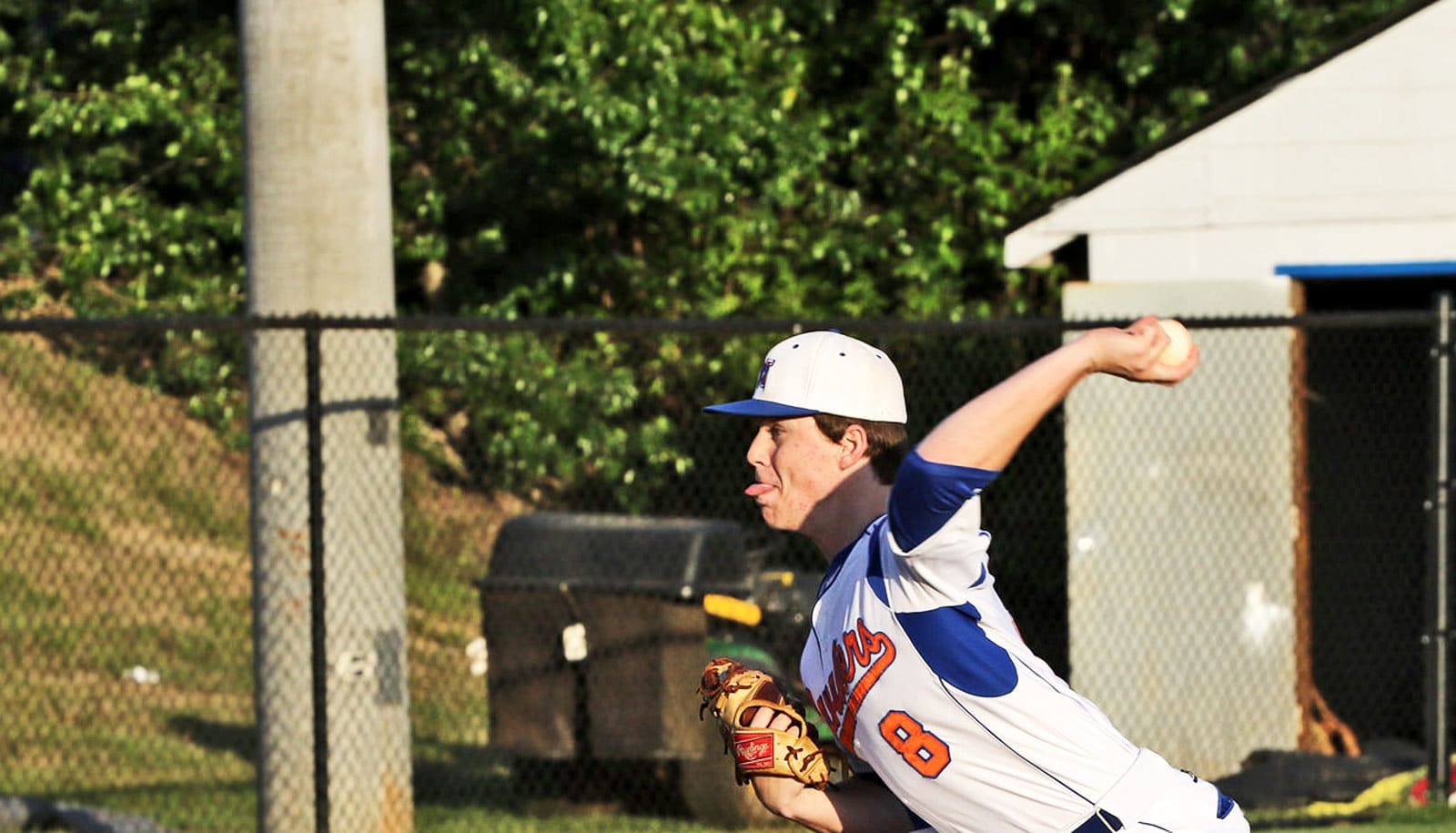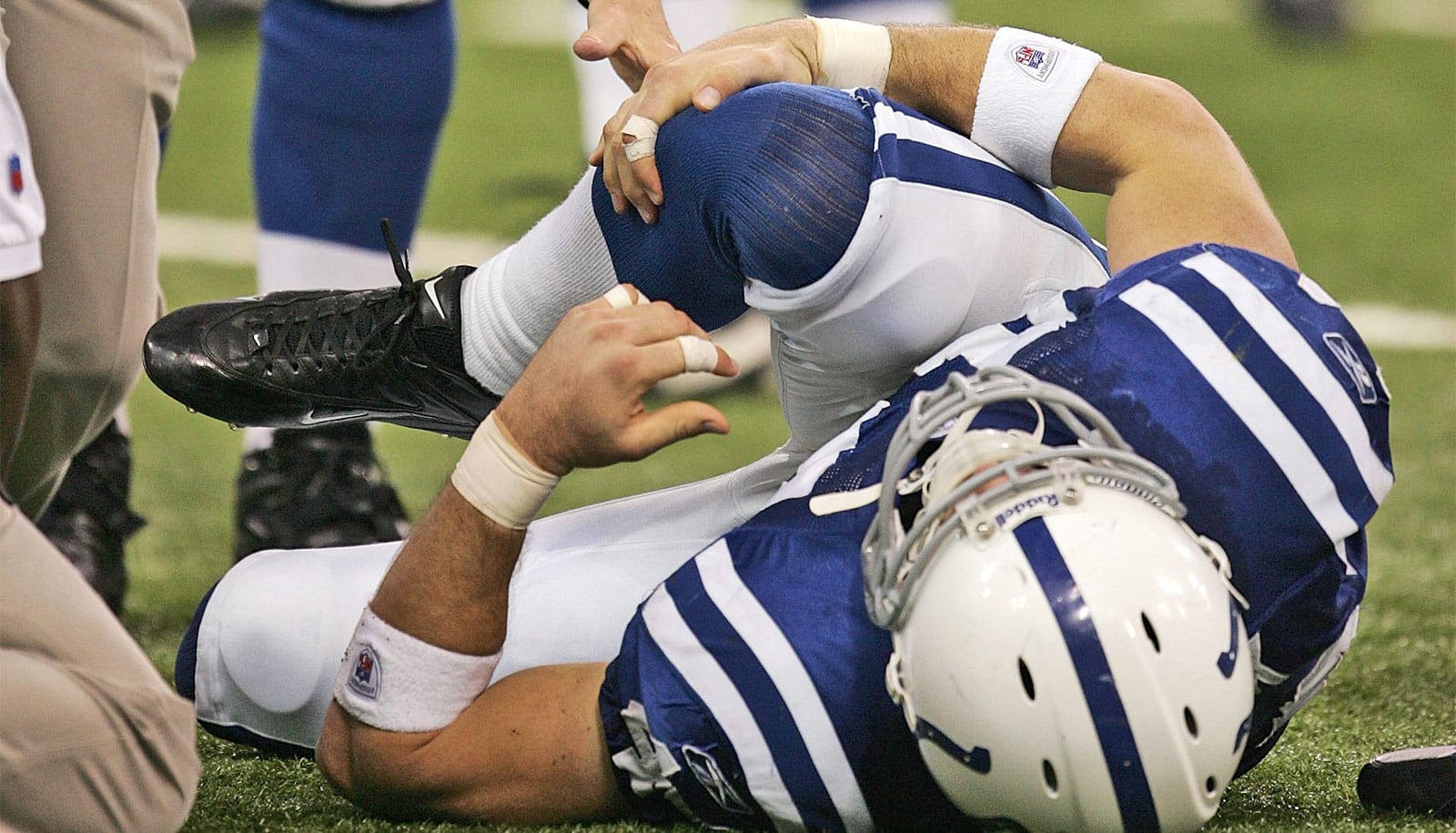Nearly half the number of pitches—ones thrown during warm-ups and in the bullpen—typically go uncounted, adding significantly to a pitcher’s risk of injury, a new study shows.
Excessive pitching is one of the main risk factors for elbow and shoulder injuries among high school baseball players. The Florida High School Athletic Association limits 17- and 18-year-old players to 105 pitches a day.
But after observing and counting nearly 14,000 pitches by 115 starting pitchers in North and Central Florida during the 2017 high school baseball season, researchers found that 42.4 percent of the players’ throws were unaccounted for in team pitch counts.
Here’s how uncounted pitches add up: The typical player threw about 69 pitches during game action. But when warm-ups and bullpen activity go into the tally, the mean number of pitches per game swell to more than 119.
All of those extra pitches should be counted to determine the true number of pitches thrown and to possibly reduce the risk of overuse injury, says lead author Jason Zaremski, assistant professor of orthopedics in the University of Florida College of Medicine.
The stakes are high for pitchers. Previous research has found they suffer the majority of shoulder and elbow injuries among high school players, typically from overuse. Zaremski and colleagues wanted to know why pitching injuries haven’t decreased despite pitch-count limits that began in 2016 and better awareness of other known risk factors.
“The volume of pitches being thrown is much greater that what is being counted. It’s not just the effect of one game. Overuse has a cumulative effect over the course of a month, a season, or a career,” he says.
In addition to making pitchers more susceptible to injury, excessive throwing can have other effects, such as changing their pitching motion, reducing their pitch velocity, or reducing their ball control, Zaremski says.
The study did not make a correlation between pitch counts and injuries. Next, Zaremski plans to begin studying how variations in pitching affect the forces on pitchers’ arms.
Knowing pitchers’ true workloads, can be a useful tool for making changes to their regimens that will help them avoid injuries, he says.
“This re-emphasizes the importance of preparing your arm in the off-season and preseason for the rigors of the regular season. If you don’t do that, your arm is going to break down—particularly as you get older and can start throwing harder.”
Starting tackle football early sets kids up for brain problems
One possible solution is to build up pitchers more in the off season so their arms are better prepared for the regular season. Pitchers could also build themselves up more slowly at the beginning of the season—an idea bolstered by data from Major League Baseball, where the lowest injury rates occur in August and September, when the season is winding down.
“Their bodies have become used to the season,” Zaremski says. “They’ve become used to the workload.”
There are things high school athletes, coaches, and parents can do to shield players from injury, Zaremski says:
- Prepare players’ arms for an upcoming season with a comprehensive pitching program
- Participate in a full-body, “kinetic chain” training program that optimizes energy transfer and efficient, effective movement
- Use high-speed video or video analysis of the pitching motion
- Keep close track of total number of pitches—not just those during games
While resources can be scarce at the high school level, these practices can reduce injuries that result from chronic overuse, Zaremski says.
The study appears in the Orthopaedic Journal of Sports Medicine.
Source: University of Florida



